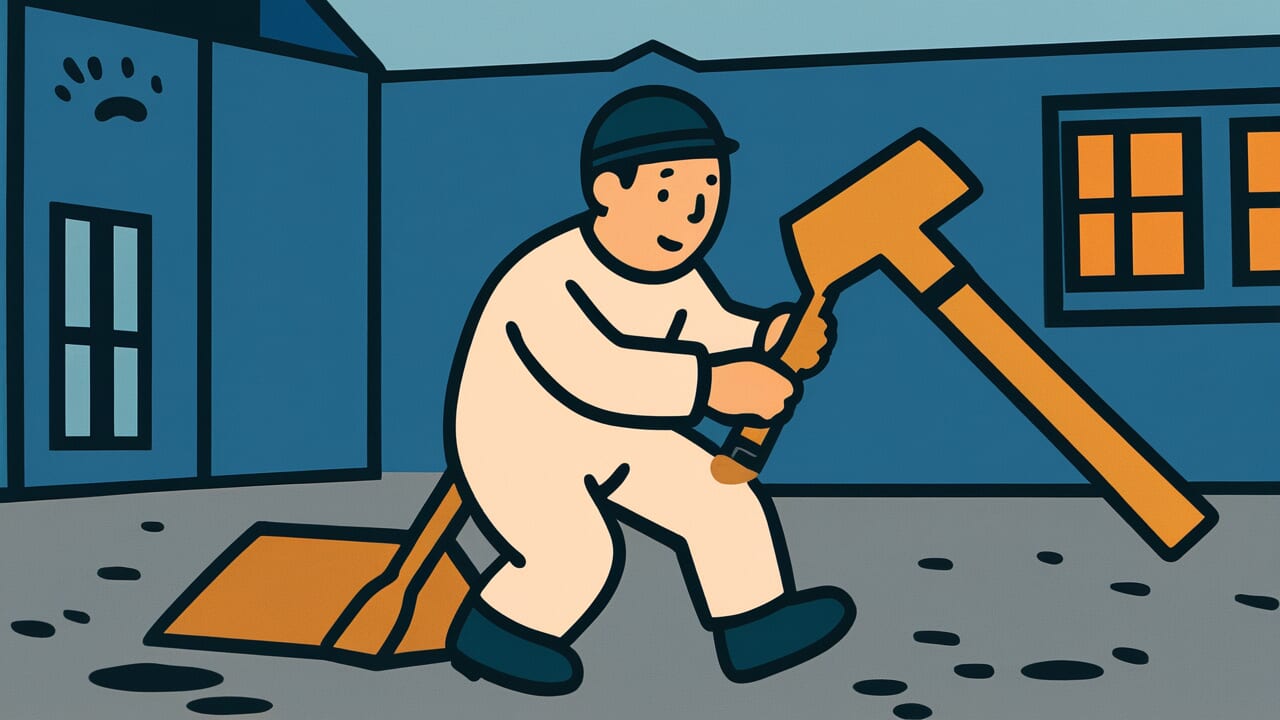How to Read “A hoe user under the veranda”
En no shita no kuwa tsukai
Meaning of “A hoe user under the veranda”
“A hoe user under the veranda” is a phrase that honors people who work quietly in places no one sees. It celebrates those who support organizations and others from behind the scenes.
The image comes from someone using a hoe to till soil in the dark space under a veranda where nobody watches. This represents people who play essential roles without ever standing in the spotlight.
This proverb is used when you want to recognize contributions that are hard to see or appreciate. It applies to people who work behind the scenes in organizations, family members who support their households, and those who work hard during the preparation stages of projects.
It expresses respect for people who dedicate themselves in places where no spotlight shines. Even in modern society, this important phrase reminds us that behind every glamorous success, there is always a hoe user under the veranda.
Origin and Etymology
No clear record exists of when this proverb first appeared in literature. However, we can make interesting observations by examining the phrase’s components.
“Under the veranda” refers to the space between the floorboards and ground in traditional Japanese architecture. This space was usually dark, narrow, and never seen by people.
By combining this with “using a hoe,” an agricultural action, the phrase creates a powerful symbol of extremely inconspicuous labor.
The hoe is one of the most basic tools in Japanese farming. It has been used for the heavy work of tilling soil and creating fields.
Normally, hoe work happens outdoors in fields. But by deliberately placing it “under the veranda” in an invisible location, this phrase creates a striking contrast.
During the Edo period, carpenters and craftsmen used a similar expression called “the strong person under the veranda.” This phrase came from recognizing the importance of the foundation that supports buildings.
“A hoe user under the veranda” similarly reflects the Japanese aesthetic of valuing work done in invisible places. A culture that respects the attitude of working silently without appearing in public created such expressions.
Usage Examples
- She is a hoe user under the veranda, quietly handling the team’s document preparation and coordination
- The department head received the award, but the real hoe user under the veranda was the senior who supported us from the planning stage
Universal Wisdom
The reason “A hoe user under the veranda” has been passed down for so long lies in its deep insight into the essential structure of human society.
No organization and no success ever stands on the power of just one person. Behind every glamorous stage, there are always people sweating in invisible places.
What’s interesting is that this proverb doesn’t simply point to “inconspicuous work.” It includes the value judgment of “honoring” such work.
Humans naturally tend to focus on visible results and people who attract attention. Yet our ancestors, knowing this natural human tendency, deliberately taught that invisible effort has the greatest value.
This wisdom is universal because it confronts the fundamental human desire for recognition. Everyone wants to be acknowledged and appreciated.
But for society to function, someone must take on unrewarded roles. This proverb may have been born to support the hearts of such people and protect their dignity.
It continues to teach us across time about the importance of having eyes that can “see” invisible effort.
When AI Hears This
Systems theory researcher Donella Meadows ranked twelve points for changing systems from weakest to strongest effect. Surprisingly, setting numerical targets and changing organizational structure ranked low.
The most powerful interventions were “changing the system’s purpose” and “transcending paradigms” at the deep layers. In other words, changing invisible assumptions and values is 100 or 1000 times more effective than tinkering with visible parts.
A hoe user under the veranda embodies exactly this principle. In a building, replacing wallpaper or installing a new sign is visible but doesn’t change the building’s essence.
But reinforcing the foundation under the veranda dramatically improves the entire building’s durability. And foundation work is unglamorous labor in places no one sees.
The same pattern appears in companies. Advertising campaigns and organizational chart changes are visible but have limited effect.
Meanwhile, companies that changed the “invisible foundation” of employee consciousness and corporate culture transform into completely different organizations ten years later. Google’s 20% rule creating innovation through cultural mechanisms is a typical example.
This proverb teaches that impact and visibility are inversely proportional. The deeper the system layer, the harder it is to change, but once changed, everything transforms fundamentally.
Lessons for Today
What this proverb teaches modern people is the importance of cultivating “the power to see.” In an age where people compete for “likes” on social media and standing out seems valuable, we should sharpen our sensitivity to notice the hoe user under the veranda.
Look around you. The person who arrives at work earliest to prepare, the person who carefully summarizes meeting minutes, the family member who cooks daily meals with health in mind.
These people’s efforts aren’t flashy, but they definitely support your daily life.
And perhaps you yourself are a hoe user under the veranda for someone. Even in moments when you feel unrewarded, your effort is never wasted.
Someone is always watching. And above all, you yourself know your own sincerity.
This proverb teaches the dignity of a life dedicated to what truly matters, rather than seeking glamour. Even if no one notices, your sincere effort is definitely supporting someone’s life and society itself.



Comments